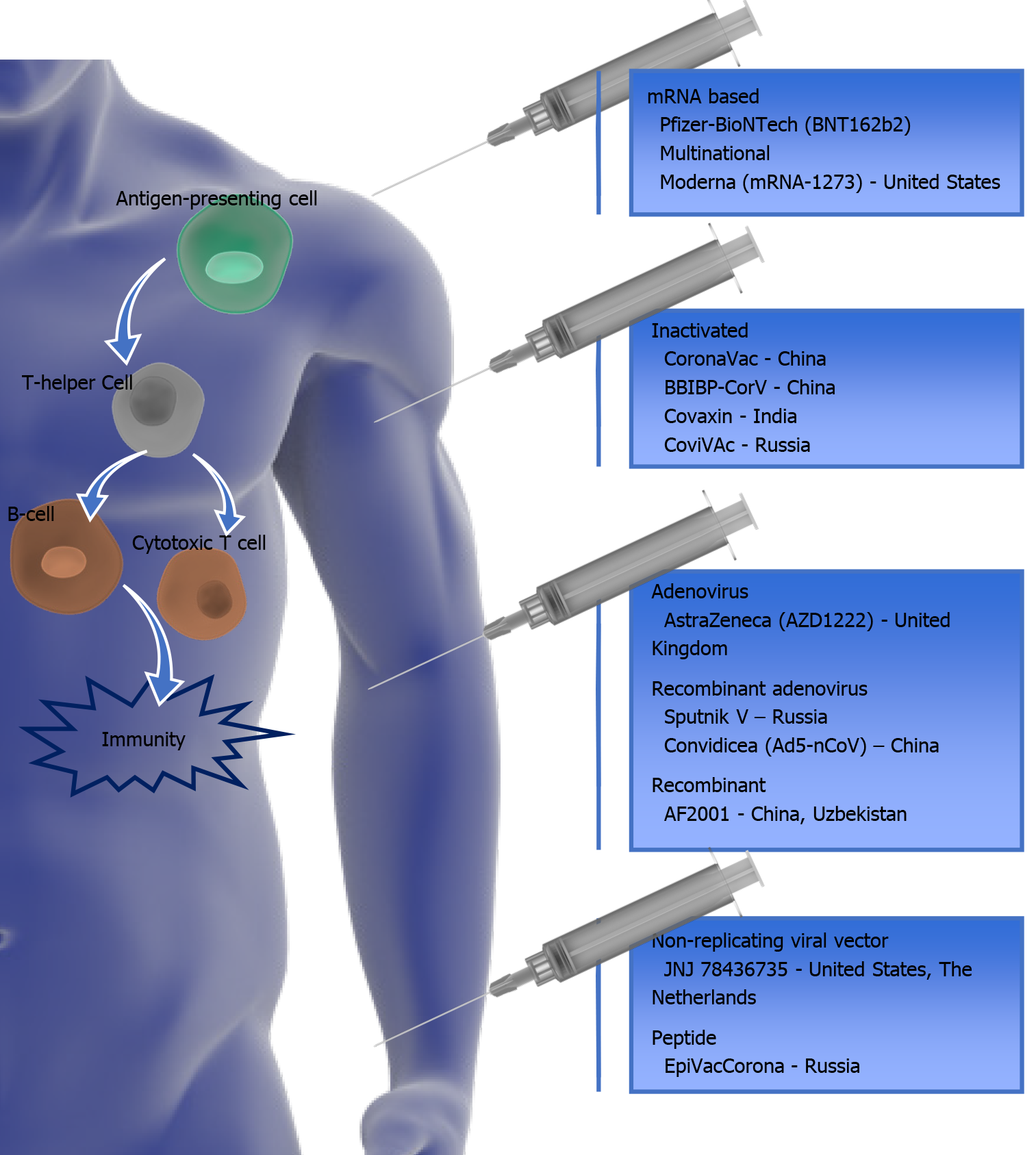Copyright
©The Author(s) 2021.
World J Gastroenterol. Dec 14, 2021; 27(46): 7969-7981
Published online Dec 14, 2021. doi: 10.3748/wjg.v27.i46.7969
Published online Dec 14, 2021. doi: 10.3748/wjg.v27.i46.7969
Figure 1 Schematic representation of severe acute respiratory syndrome coronavirus 2 life cycle causing coronavirus disease 2019.
Angiotensin-converting enzyme 2 receptors located on the cell surface of ciliated epithelial cells in the respiratory airways, and in type II pneumocytes in the alveoli, bind to virus spike proteins (I). The virus enters the cell body (II) and releases its RNA (III) using host cells to create new virus particles by replication of RNA and translation of polyproteins (IV). New viral particles are assembled (V) and released by exocytosis (VI). Library of Science & Medical Illustrations were utilized in part to create this figure. https://creativecommons.org/licenses/by-nc-sa/4.0/.
Figure 2 Overview of severe acute respiratory syndrome coronavirus 2 affecting multiple body systems directly or indirectly.
Library of Science & Medical Illustrations were utilized in part to create BioNTech this figure. https://creativecommons.org/licenses/by-nc-sa/4.0/.
Figure 3 Summary of authorized/approved coronavirus disease 2019 vaccines around the world and their mechanism.
The immune response starts by antigen-presenting cells engulfing the virus and activating T-helper cells. These T-helper cells enable an immune response via B cells (antibodies) and Cytotoxic T cells to destroy virus-infected cells. Library of Science & Medical Illustrations were utilized in part to create this figure. https://creativecommons.org/licenses/by-nc-sa/4.0/.
- Citation: Bhurwal A, Minacapelli CD, Orosz E, Gupta K, Tait C, Dalal I, Zhang C, Zhao E, Rustgi VK. COVID-19 status quo: Emphasis on gastrointestinal and liver manifestations . World J Gastroenterol 2021; 27(46): 7969-7981
- URL: https://www.wjgnet.com/1007-9327/full/v27/i46/7969.htm
- DOI: https://dx.doi.org/10.3748/wjg.v27.i46.7969











